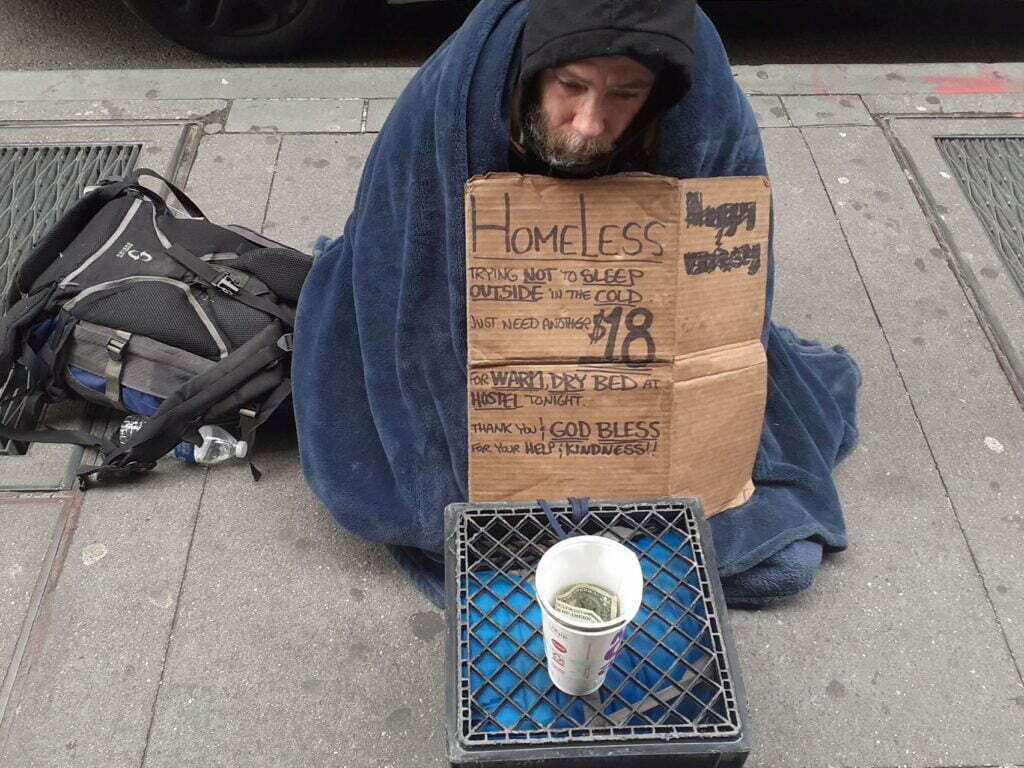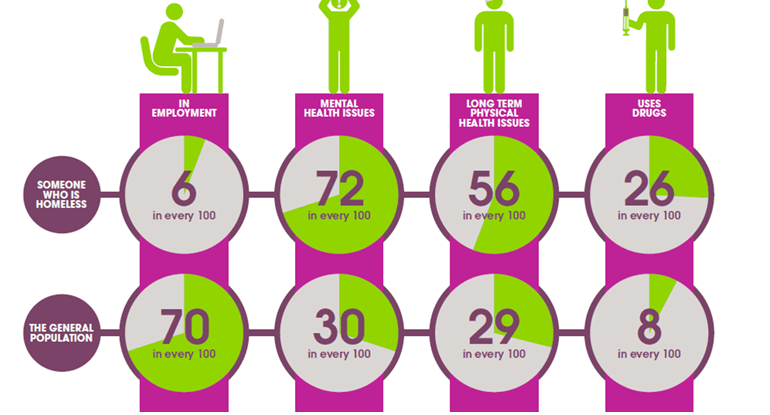The Housing First system was developed in 1988 in Los Angeles and then spread to other cities. The idea is to help homeless people to move from shelters through transitional housing into own permanent housing.
Study by Dennis Culhane which examined the period 2004 – 2010 found that prevention services were most effective for the households – both family and single adult – who were at the highest risk of becoming homeless, rather than the households who fit prevention programs´ eligibility criteria. It means, that successful strategies for homelessness prevention must efficiently target people at greatest risk for experiencing homelessness.”
Many similar programs are different at one point – some have the primary goal of getting people off the street without any conditions. Other models have conditions like not drinking alcohol or using drugs. Preferred are chronic homeless people, families with children and victims of domestic violence.
Supportive housing has been shown to help people permanently stay out of homelessness, improve health conditions, and, by reducing their use of crisis services, lower public costs.
A chronically homeless person costs the taxpayer an average of $35,578 per year. The study shows how costs on average are reduced by 49.5% when they are placed in supportive housing. Every $10,00 invested into ending homelessness yields $21,72 in return.

While the number of temporary housing beds decreased by 9 percent, the number of permanent housing beds (Permanent Supportive Housing, Rapid Re-Housing, and Other) increased by 20 percent over the last five years. These numbers reflect a shift in policy priorities. Renewed emphasis is on ending homelessness by moving more people into permanent housing, rather than allowing them to linger indefinitely in shelters and unsheltered locations.
One of the key parts of the process is an effort of outreach workers to try to persuade especially chronic homeless people to join the program. Therefore, outreach worker must be trained and demonstrate proficiency, at a minimum, in the skill areas such as safety and engagement strategies, motivational interviewing, assertive engagement, mental health first aid, harm reduction, trauma-informed care, person-centered care, overdose first aid, documentation. (Matthew Desmond, Evicted)
Outreach groups also need cooperation from people on the street. Workers can spend months convincing someone even to know his or her name. It is critical that the support worker teach the participant how to solve problems rather than being the problem solver.” It is also essential to collect real-time data about the homeless. (Matthew Desmond, Evicted)

There are many reasons why people do not use shelter services – they are not willing follow the shelter rules, unprofessional approach of outreach workers, being barred for past violence or other legal restrictions. And there is also another problem – residents complain about opening shelters in their neighborhood.
The Annual Homeless Assessment Report in the United States has shown that 30% of people stay a week or less in a shelter, 25% stay 8 to 30 days, and about 35% stay 31-180 days.“
Experts say that one possible solution is learning from successful examples. That means going to lower-income neighborhoods and speaking with tenants about how they figured out their housing needs without being homeless. They can explain how to overcome the obstacles that you saw in the people you are sheltering.


